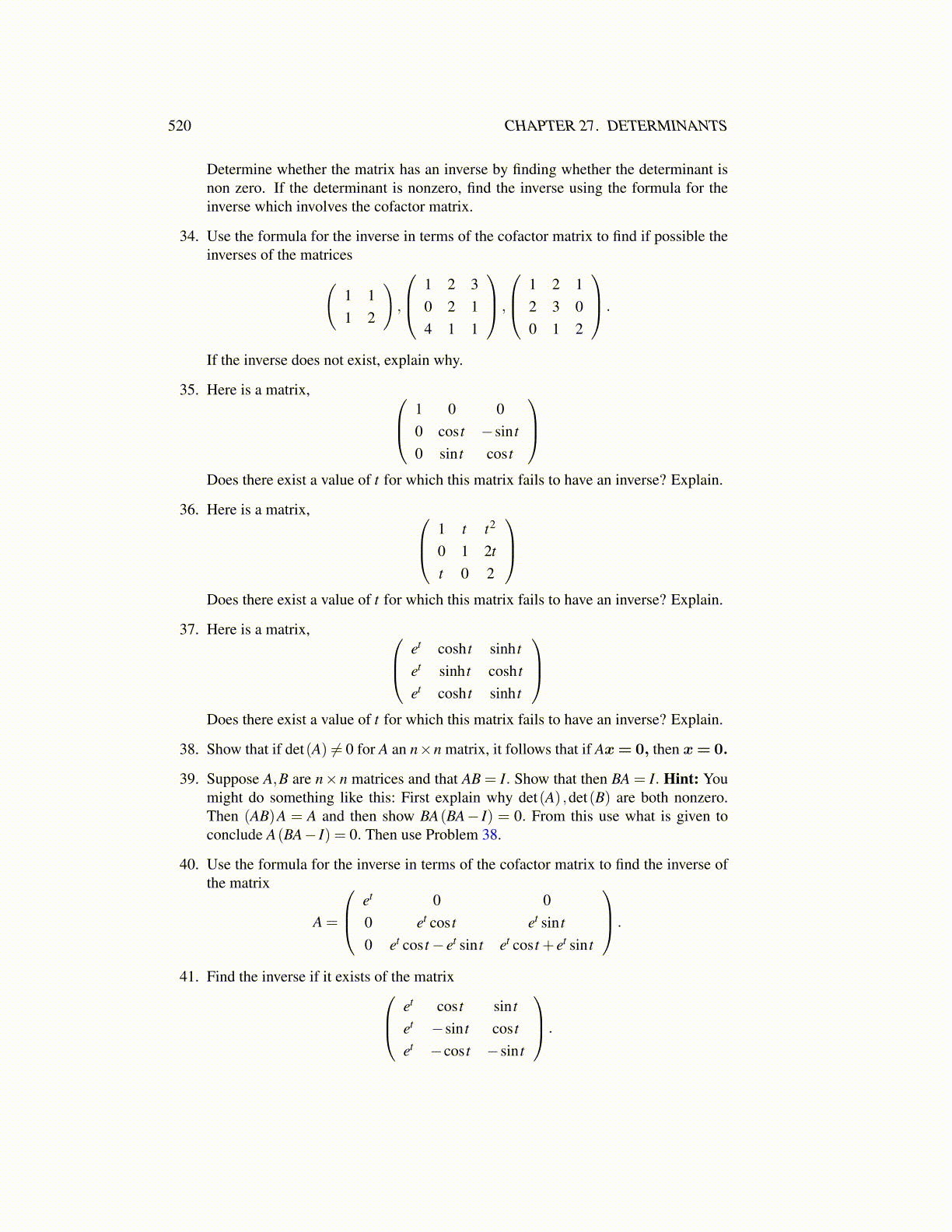
520 CHAPTER 27. DETERMINANTS
Determine whether the matrix has an inverse by finding whether the determinant isnon zero. If the determinant is nonzero, find the inverse using the formula for theinverse which involves the cofactor matrix.
34. Use the formula for the inverse in terms of the cofactor matrix to find if possible theinverses of the matrices(
1 11 2
),
1 2 30 2 14 1 1
,
1 2 12 3 00 1 2
.
If the inverse does not exist, explain why.
35. Here is a matrix, 1 0 00 cos t −sin t0 sin t cos t
Does there exist a value of t for which this matrix fails to have an inverse? Explain.
36. Here is a matrix, 1 t t2
0 1 2tt 0 2
Does there exist a value of t for which this matrix fails to have an inverse? Explain.
37. Here is a matrix, et cosh t sinh tet sinh t cosh tet cosh t sinh t
Does there exist a value of t for which this matrix fails to have an inverse? Explain.
38. Show that if det(A) ̸= 0 for A an n×n matrix, it follows that if Ax= 0, then x= 0.
39. Suppose A,B are n×n matrices and that AB = I. Show that then BA = I. Hint: Youmight do something like this: First explain why det(A) ,det(B) are both nonzero.Then (AB)A = A and then show BA(BA− I) = 0. From this use what is given toconclude A(BA− I) = 0. Then use Problem 38.
40. Use the formula for the inverse in terms of the cofactor matrix to find the inverse ofthe matrix
A =
et 0 00 et cos t et sin t0 et cos t− et sin t et cos t + et sin t
.
41. Find the inverse if it exists of the matrix et cos t sin tet −sin t cos tet −cos t −sin t
.